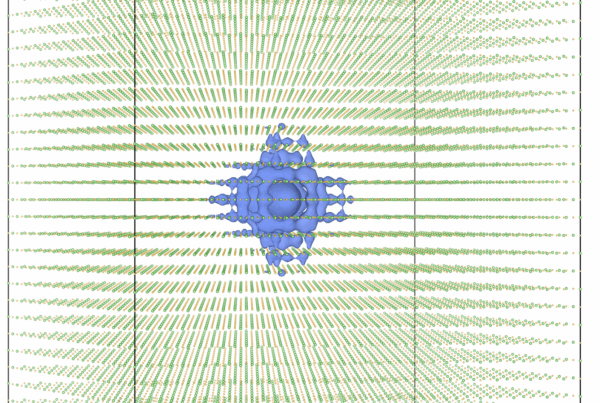Using Summit, the world’s most powerful supercomputer housed at Oak Ridge National Laboratory, a team led by Argonne National Laboratory ran three of the largest cosmological simulations known to date. They modeled nearly two trillion particles in each simulation to trace matter distribution and generated a total of eight petabytes of data. These “virtual universes” will enable scientists to compare next-generation telescope observations with some of today’s reigning physics theories, including the impact of dark energy and the mass of neutrinos, once thought to be massless, on the structural formation of the universe. “This data will be very valuable for our studies with the Large Synoptic Sky Survey Telescope,” said Katrin Heitmann, Argonne physicist and computational scientist and an Oak Ridge Leadership Computing Facility Early Science user. Currently under construction, the telescope will image about 37 billion stars and galaxies, and supercomputing simulations are preparing the project for the monumental data analysis required.
ORNL’s Summit supercomputer was used to simulate and visualize the matter distribution of a virtual universe
You May Also Like
 Science
Science
Celeritas code sets fast pace for particle physics discoveries
by Dawn Levy High energy physicists run on a treadmill that keeps speeding up. Their collider experiments smash particles at dazzling speeds and energies. Detectors identify and track the multitudes of smaller particles that fly out. With powerful new colliders crashing particles at ever-increasing energies, even more daughter particles are…
Katie BetheaNovember 19, 2025
 FeaturedIndustryScienceTechnology
FeaturedIndustryScienceTechnology
Frontier simulations spin up new details for quantum understanding
Researchers used the world’s fastest supercomputer for open science to uncover new insights that could pave the way for the next generation of quantum computing, sensing and communications technologies through more efficient control of quantum materials and their properties. The study conducted on the Frontier supercomputer at the Department of…
Matt LakinNovember 17, 2025
 FeaturedScienceTechnology
FeaturedScienceTechnology
Training on Frontier delivers faster, more precise AI weather forecasts
Researchers used the world’s fastest supercomputer for open science to make the world’s largest artificial intelligence model for weather prediction even larger, more detailed, and more accurate. The second version of the Oak Ridge Base Foundation Model for Earth System Predictability, or ORBIT-2, dials in up-to-the-minute forecasts down to the…
Matt LakinNovember 14, 2025



